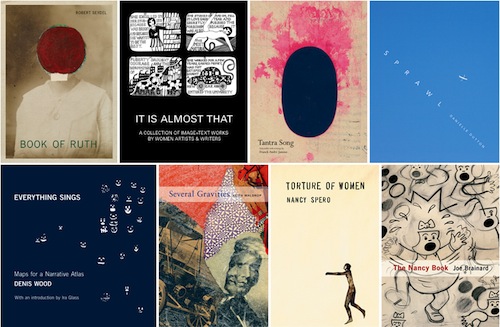Siglio Press's Lisa Pearson in Conversation with The Believer

The Believer Logger posted this great conversation between Nicolle Elizabeth, one of its staffers, and Lisa Pearson, the founder and publisher of Siglio Press. (Perhaps you recognize the name "Siglio" from "In Gray There is Multiplicity: Snapshots from It Is Almost That / A Collection of Image+Text work by Women Artists & Writers," Eileen Myles's fantastic review.) For all you emerging small press publishers out there: we recommend both Eileen's review and Nicolle Elizabeth's recent and wonderfully informative interview with Siglio Press's director, Lisa Pearson.
NICOLLE ELIZABETH: Hi, Lisa. We’re interviewing publishers, authors, and editors in an effort to share information with readers on what it is like to work in the many facets of publishing. Siglio is a publishing house that has brought many things, such as the works of Spero and Brainard and Calle, to better light. Can you walk us through the differences between publishing novels and publishing art books, with regard to the specifics of the process?
LISA PEARSON: Collaboration and conversation. The novelist generally writes in isolation and most often thinks of “the book” as a kind of delivery system for the language she has so carefully composed and honed into a work of literary art. If she works with an editor, it is on the writing itself; the physical qualities of “the book” are out of her hands and may be of little interest other than wanting a really great cover and decent paper stock. For an artist, and particularly for the kinds of books Siglio publishes—which are more like artists’ books than monographs or catalogues—the physical manifestation of the work as a book is not only critical but intrinsic to the work: it mediates the reader’s relationship with that work in a way that is much less transparent than with a novel, a nonfiction book, or a collection of stories. There are a thousand decisions, large and small, to get the work to really live on the page and as as an object the reader holds in her hands. That’s a dynamic process in which publisher and author/artist engage together: it’s creative and conceptual, but also practical and logistical. And I bring that same kind of attention to the fiction and prose I publish. For instance, in the novel SPRAWL by Danielle Dutton, there are no actual images, but the shape of the book itself, the wide margins, and the space between lines of text, make an essential contribution to nature of the reader’s experience with the book. It’s subtle, but it makes a difference.
Read about Lisa Pearson, Siglio, and how to run a really cool small press at The Believer Logger.


